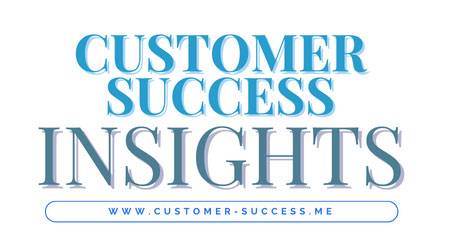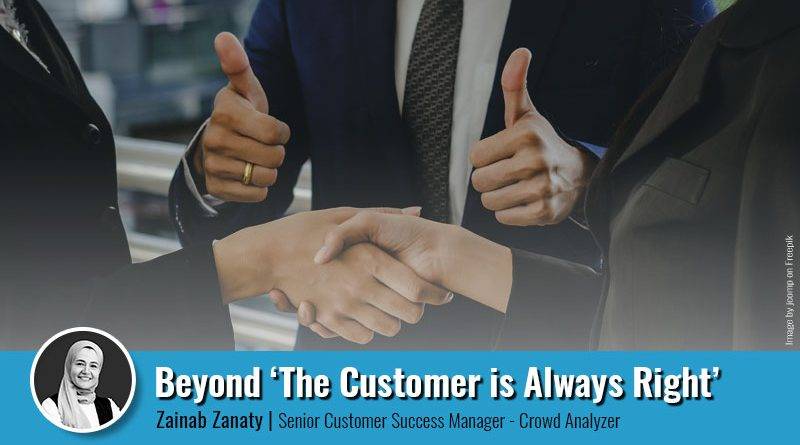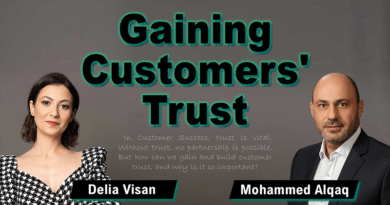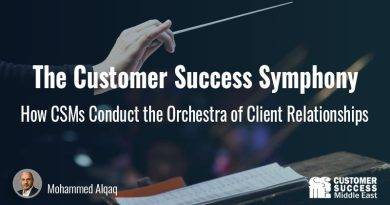Beyond The Customer is Always Right: A Balanced Approach to Customer Success
Beyond 'The Customer is Always Right'A Balanced Approach to Customer Success
By: Zainab Zanaty
The phrase “The customer is always right” has been a cornerstone of business philosophy for decades, acting as a guiding principle for countless companies aiming to achieve exceptional customer service. Coined in the early 20th century by influential retail pioneers like Harry Gordon Selfridge, John Wanamaker, and Marshall Field, this adage was intended to assure customers that their satisfaction was the highest priority. By doing so, businesses hoped to build trust, loyalty, and a positive reputation.
However, as the business landscape has evolved, so too have the dynamics between companies and their customers. Today, the relationship is more complex and multifaceted than ever before. The rise of digital communication, social media, and online reviews has given customers unprecedented power and influence. They can share their experiences, both positive and negative, with a global audience in real-time. This shift has prompted businesses to reconsider the validity and application of the adage “The customer is always right.”
Table of Contents
In this modern context, the strict adherence to this principle can sometimes lead to unintended consequences, such as enabling unreasonable demands, undermining employee morale, and compromising business integrity. Therefore, it is crucial to examine whether this long-standing maxim still holds true or if it requires a more nuanced approach.
Origin of “The Customer Is Always Right”
The timeless aphorism “The customer is always right” is widely attributed to Harry Gordon Selfridge, the founder of the popular Selfridge’s department store located in London.
Wisconsin-born Selfridge introduced the phrase in the early 1900s to encourage employees to prioritize customer satisfaction and create an environment where customers felt valued and respected. It was all part of his marketing and brand establishment.
But, some sources also attribute the saying to other business magnates of the era, like César Ritz, who was the founder of the famous Ritz Hotel. He actually coined the phrase as “Le client n’a jamais tort,” which translates as “the customer is never wrong.” – Grammarist.com
From the perspective of Customer Success, the goal is not merely to satisfy customers in the short term but to ensure they achieve their desired outcomes in a way that aligns with the company’s long-term success. Customer Success (CS) professionals strive to balance customer satisfaction with sustainable business practices, recognizing that a successful customer relationship is built on mutual value, understanding, and respect.
This article delves into the historical context of the adage, explores its potential pitfalls, and presents a balanced approach through the lens of Customer Success. By analyzing real-world examples and offering insights into best practices, we aim to provide a comprehensive understanding of whether the customer is indeed always right and how businesses can navigate this complex terrain to achieve lasting success.
The Modern Customer Success Landscape
In today’s digital age, the relationship between businesses and customers has evolved dramatically. With the advent of social media, online reviews, and instant communication, customers have more power and voice than ever before. While the foundational principle of valuing customer feedback remains, the idea that the customer is always right can be problematic when applied rigidly.
“People say the customer is always right, but you know what – they’re not. Sometimes they are wrong and they need to be told so.”
— Michael O'Leary
The Pitfalls of "The Customer is Always Right"
While the adage “the customer is always right” aims to prioritize customer satisfaction, it can have significant drawbacks if followed blindly. This section explores various pitfalls of adhering strictly to this principle, highlighting how it can lead to unreasonable demands, impact employee morale, compromise business integrity, and create inefficiencies. Understanding these challenges is crucial for maintaining a balanced approach that considers both customer needs and business sustainability.
Unreasonable Demands: Not all customer requests are reasonable or feasible. Adhering strictly to this adage can lead to unsustainable practices, where businesses overextend themselves to meet unrealistic expectations. This can drain resources, impact operational efficiency, and ultimately harm the business.
Employee Morale: Continuously siding with customers, especially when they are unreasonable, can demoralize employees. It can create a toxic work environment where employees feel undervalued and unsupported. High employee turnover and low job satisfaction can result from consistently prioritizing customers over employees’ well-being.
Business Integrity: There are times when the customer’s demands may conflict with the company’s values or long-term goals. Prioritizing short-term satisfaction over long-term integrity can harm the business in the long run. Companies may be forced to compromise on their principles, leading to a loss of brand authenticity and trust.
Inefficiency and Resource Drain: Constantly bending to customer demands can lead to inefficiencies and a significant drain on resources. This can divert attention away from other important business activities and strategic goals, causing overall productivity to suffer.
Quality Compromise: In an effort to keep customers happy at all costs, businesses might compromise on the quality of their products or services. This can lead to substandard offerings, damaging the company’s reputation and leading to long-term customer dissatisfaction.
Lack of Scalability: A business model built on the principle that the customer is always right may struggle to scale. As the company grows, it becomes increasingly difficult to manage and meet every individual customer’s demands, leading to operational chaos and inconsistencies.
Inequity Among Customers: Favoring demanding customers can create a sense of inequity among the broader customer base. Those who are polite and reasonable may feel neglected or undervalued, leading to potential loss of loyal customers who feel their needs are not being prioritized.
Overpromising and Under-delivering: In the rush to please customers, businesses might overpromise on what they can deliver. This can lead to a cycle of under-delivering, disappointing customers, and damaging the company’s reputation for reliability and trustworthiness.
Stifling Innovation: By focusing too much on current customer demands, companies might neglect innovation and future development. The pressure to meet every customer request can stifle creativity and hinder the company’s ability to innovate and stay ahead in a competitive market.
Financial Strain: Meeting every customer demand can put a significant financial strain on the company. This could lead to increased costs without a corresponding increase in revenue, ultimately affecting the company’s bottom line and financial stability.
A Balanced Approach: Customer Success
Customer Success (CS) offers a balanced perspective. It focuses on ensuring that customers achieve their desired outcomes while using the product or service, aligning customer satisfaction with business success. Here’s how Customer Success professionals navigate the adage:
Active Listening and Understanding: CS professionals prioritize understanding the customer’s needs and pain points. This involves active listening and empathy, ensuring customers feel heard and valued without necessarily conceding that they are always right.
Educating Customers: Often, customers may not have a full understanding of the product or service. Educating them on the best practices and optimal use cases can help align their expectations with what the product can realistically deliver.
Setting Boundaries: CS teams set clear boundaries and communicate them effectively. This helps manage customer expectations and ensures that both parties are on the same page regarding what is feasible.
Feedback Loops: Incorporating customer feedback into product development and service improvement is crucial. However, it’s important to differentiate between constructive feedback and demands that do not align with the business model or objectives.
Building Partnerships: Customer Success is about building long-term partnerships rather than simply addressing immediate concerns. This involves creating mutual value and ensuring that the relationship is beneficial for both the customer and the business.
While the adage “The customer is always right” has its merits in emphasizing the importance of customer satisfaction, it is not an absolute truth. From a Customer Success perspective, a more nuanced approach is necessary—one that values customer feedback, sets realistic expectations, and builds long-term partnerships. By balancing customer needs with business integrity and employee well-being, companies can achieve sustainable success and foster loyal, satisfied customers.
The evolution of the business-customer relationship in the digital age requires a shift from the traditional, black-and-white view of customer service. Customer Success (CS) represents this shift by focusing on the broader picture: ensuring customers achieve their desired outcomes while maintaining the company’s health and integrity. This approach recognizes that while customers are vital to the business, they are part of a larger ecosystem that includes employees, business goals, and sustainable practices.
Real-world examples, such as SaaS companies and retail businesses, demonstrate the effectiveness of a Customer Success approach. These companies focus on personalized experiences and proactive issue resolution, which not only enhances customer satisfaction but also drives higher retention rates and long-term loyalty.
A Global View Of ‘The Customer Is Always Right’
A nice review by Blake Morgan who was called “The Queen of CX” by Meta. She is a customer experience futurist and author of three books on customer experience. Blake contributes to Forbes and is the host of The Modern Customer Podcast. She lives in Southern California with her husband, their two children and two dogs.
Ultimately, the goal of Customer Success is to create a win-win situation where both the customer and the company thrive. This involves building long-term partnerships based on mutual respect and understanding, rather than adhering to an outdated notion that the customer is always right. By adopting this balanced perspective, businesses can navigate the complexities of the modern market, achieve sustainable growth, and cultivate a loyal customer base that values the relationship as much as the product or service itself.
In conclusion, while the adage “The customer is always right” has its place in the history of customer service, it is no longer sufficient in today’s complex business environment. A more nuanced, balanced approach through Customer Success not only respects the importance of customer feedback but also ensures that businesses can maintain their integrity, support their employees, and achieve long-term success. By redefining customer service in this way, companies can build stronger, more resilient relationships that benefit everyone involved.
Author

Zainab Zanaty
Senior Customer Success Manager with a proven track record in managing customer relationships for SaaS products, specialize in crafting personalized strategies to ensure successful onboarding, user adoption, and overall customer satisfaction. Her hands-on experience extends to collaborating cross-functionally with sales, product, and support teams to align customer needs with product enhancements, ultimately fostering long-term partnerships.

Stay ahead of the game.
Sign up to the newsletter.
Get all the hottest customer success conversations and talking points landing in your inbox once a month, every month.




